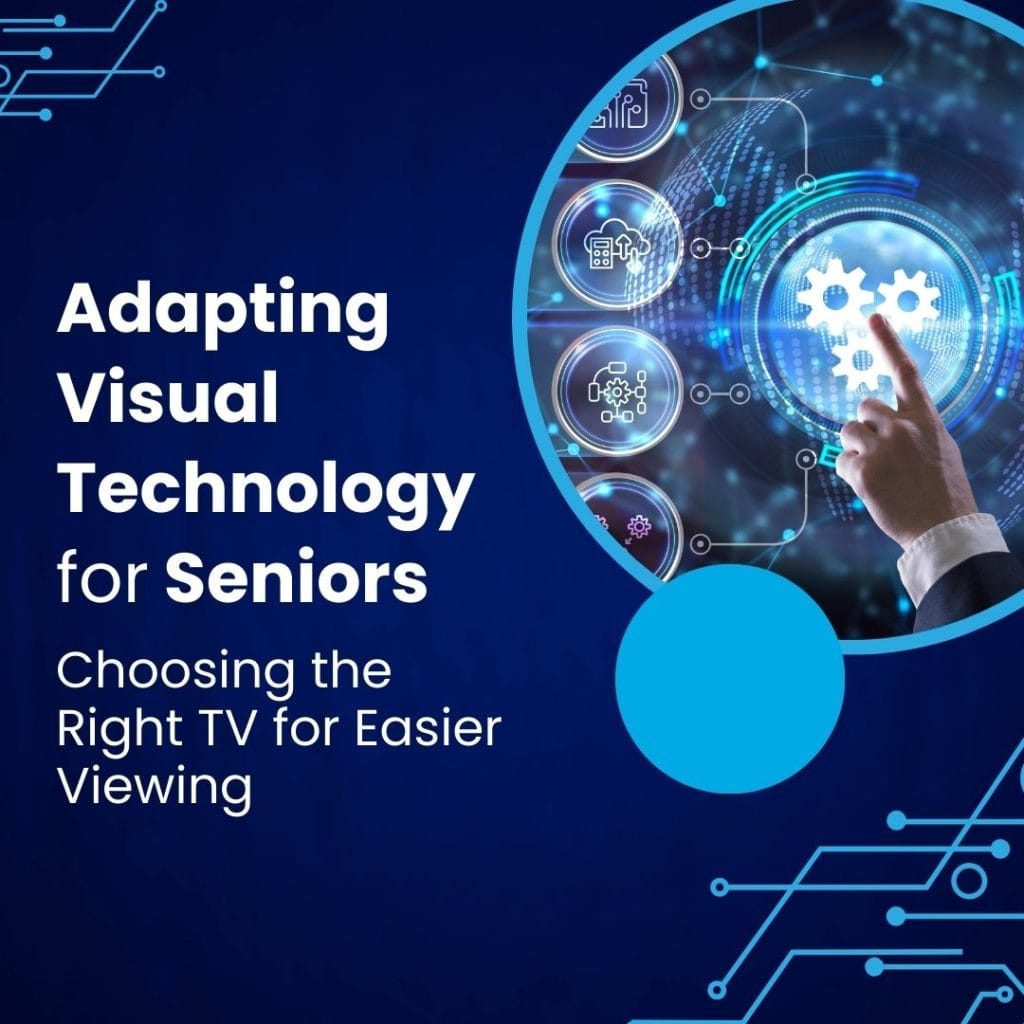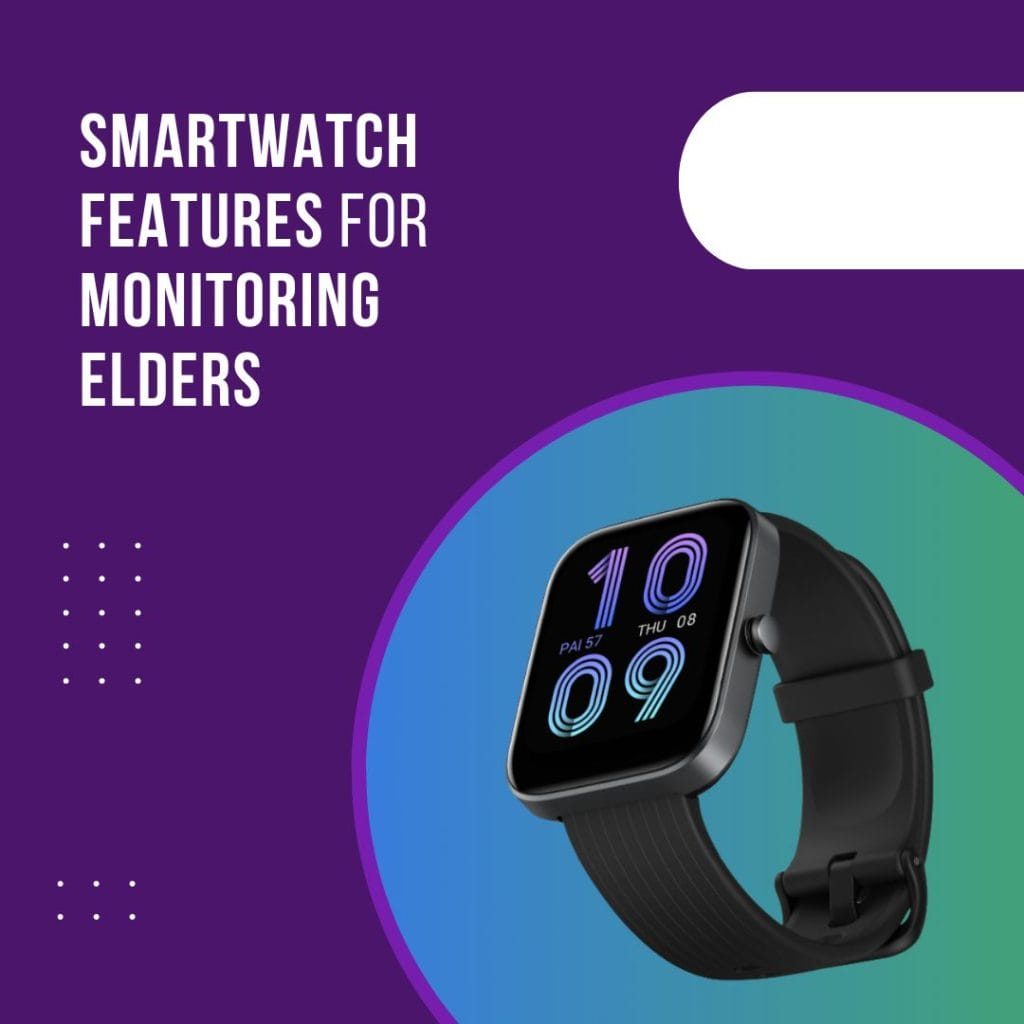Choosing a suitable television for an older individual requires particular considerations to ensure an efficient and pleasant viewing experience. Indeed, while the majority of televisions available might suffice for all age groups, we believe that the ideal TV for seniors comes with a user-friendly remote control and interface, offers uncomplicated installation and setup, and boasts high peak brightness for effortless viewing in brightly lit environments or during daytime hours.
What to Consider When Picking a TV for Seniors?
When embarking on the task of purchasing the most suitable television for an older viewer, there are several key factors that one needs to carefully contemplate. Indeed, the goal is not just to buy any television, but to specifically find one that aligns with the unique needs and preferences of the senior demographic. The most fitting television for this audience would be one that boasts a remote control and user interface marked by their simplicity and ease of use. Additionally, it should feature a straightforward installation and setup process to avoid any technical frustrations. Furthermore, a television that offers a high peak brightness level would be ideal to ensure clear and comfortable viewing in environments that are brightly illuminated or during the daytime hours.
Display Size
Calculating the perfect television size for your room is not as complex as it seems – a bit of simple arithmetic should do the trick. To get an estimate, take the measurement from where you plan to seat to the television’s location and halve it. So, if the space between your television and your sofa measures 120 inches, a 60-inch television would be the ideal choice. This method provides a general guideline, and you have the flexibility to choose a slightly larger or smaller size, depending on your preference or room aesthetics.
Display Technology
When you’re in the market for a new television, understanding the different types of display technologies on offer is crucial. There’s a variety of options each with their unique advantages and drawbacks. Let’s explore some popular choices:
1. LCD/LED TVs
LCD/LED televisions are renowned for their vibrant color displays and superb brightness. They are also energy-efficient, making them a go-to choice for everyday viewing.
2. OLED TVs
OLED televisions exceed expectations with their deep blacks, unmatched contrast ratios, and broad viewing angles. If you’re a cinema enthusiast or a gamer, an OLED TV’s superior picture quality would serve you well.
3. QLED TVs
QLED televisions harness Quantum Dot technology to offer enhanced color reproduction and brightness compared to their LCD/LED counterparts. If you value vivid, life-like visuals, a QLED TV is an excellent option.
Resolution
For an optimal and captivating viewing experience, we recommend opting for televisions with 4K resolution. This superior resolution is well-suited for a variety of television sizes, and with an abundance of 4K content readily available, you can fully leverage the potential of your 4K television. However, if your preference leans towards smaller televisions, such as a 32-inch model, a Full High Definition (FHD) resolution would suffice.
Take into account these key elements when deciding on your television’s screen size and resolution:
Screen Size Considerations
The balance between the viewing distance and your room’s dimensions will guide you towards the most suitable screen size. While larger screens can potentially offer a more engaging experience, make sure to choose a size that harmonizes with your space.
Deciphering Resolution Specifications
When it comes to resolution, choose a TV that aligns with your specific requirements. Full HD (1080p) serves as a fitting choice for smaller screens, whereas if you’re opting for a larger screen, 4K Ultra HD will deliver improved sharpness and detail.
Brightness
For individuals intending to use their television in a brightly lit room or during daylight hours, a model with medium to high brightness ratings is advisable. A television delivering a brightness level between 500 and 700 nits typically ensures a satisfying viewing experience, even under moderate ambient lighting conditions.
Controls
For the majority, an intuitive control system that rapidly directs us to our desired content would be highly beneficial. Thus, it’s recommended to opt for televisions equipped with user-friendly operating systems and voice assistants, ensuring a simplified user experience.
A crucial element to consider when searching for a senior-friendly television is the ease of use of the remote control. Ideal remote controls for this demographic usually sport larger buttons that come with legible, straightforward labels. The key is to have fewer buttons that focus on the essential functions, thereby minimizing potential confusion and doing away with extraneous complexities. Basic functionalities such as power, volume adjustment, channel switching, and input selection should have their own dedicated buttons.
Voice Control Functionality
An additional important factor to bear in mind when selecting a television for an older individual is the availability of voice control features. This state-of-the-art capability empowers users to conduct TV operations just through voicing out commands. Changing channels, modifying the volume, and executing other tasks become a breeze for seniors, devoid of intricate button operations. The feature of voice control does away with the necessity for the elderly to negotiate challenging menus, thereby delivering a smooth and approachable television viewing experience.
While there’s no denying the significance of aesthetics, the auditory component is just as integral to your overall viewing pleasure. Here are some key considerations:
Assessing In-built Speakers
More often than not, the audio quality of a television is determined by its inherent speakers. Inspect the quality and sound output of the TV’s built-in speakers, focusing on features such as Dolby Atmos or DTS Virtual:X that enhance auditory immersion.
External Audio Enhancement
For those who yearn for a truly cinematic auditory experience, opting for a TV that is compatible with external audio systems can be highly rewarding. Seek out televisions with HDMI ARC or optical audio output to facilitate effortless connections to soundbars or home theater systems.
Intuitive User Interface
When choosing the most senior-friendly television, the ease of operation is crucial. The television should feature an interface that is intuitive and uncomplicated, enabling seniors to effortlessly traverse various settings and options. Essential to this is the inclusion of unambiguous icons coupled with sizeable, legible text, which ensures those with vision challenges can readily identify and choose their preferred options.
Closed Captioning and Audio Description
Closed captioning and audio description are fundamental features for seniors with hearing issues. The most senior-friendly television should provide a wide range of closed captioning choices, enabling them to read and keep up with the dialogue in their preferred shows. Also, the audio description feature offers narrated explanations of visual components, thus enhancing the accessibility of TV shows and films for seniors with visual impairments.
Adjustable Display Setting
A television that permits the modification of display settings can significantly improve the viewing experience for older individuals. Seek out a TV that gives the flexibility to alter brightness, contrast, and color intensity. Each of these adjustments can be tailored to suit personal tastes, securing the best visual sharpness and lessening the burden on the eyes. The most senior-friendly television would include uncomplicated controls for tweaking these settings, eliminating the necessity for navigating through intricate menus.
Large Screen Size and Clarity
Selecting a television for the elder demographic requires thoughtful consideration of screen dimensions and visual clarity. Larger screen sizes can be beneficial in providing more visible text and graphics, catering to those who may have less than perfect vision. Further, consider investing in a television boasting superior resolution, such as High Definition (HD) or 4K, to guarantee crisp visuals rich in detail. The fusion of expansive screen real estate and superior visual clarity notably elevates the television viewing experience for older individuals.
Multiple Connectivity Options
To accommodate a variety of media devices, the most user-friendly television for seniors should present an array of connection possibilities. This provision enables seniors to link a myriad of devices such as satellite or cable boxes, DVD mechanisms, and streaming apparatus. Standard connection channels comprise HDMI, USB, and audio/video inputs. The presence of numerous input alternatives guarantees adaptability and handiness for seniors, facilitating effortless transitions between varying sources devoid of any complexities.
Smart TV Features
In the contemporary digital era, the capabilities of a smart TV can open doors to a myriad of entertainment options. A smart TV provides the flexibility to stream multimedia content directly from popular applications such as Netflix, Hulu, and YouTube, putting a universe of entertainment at your disposal.
Operating System and User Interface: The Backbone of Ease of Use
The operating system is another critical factor to consider – it forms the foundation of the TV’s user interface. Look for systems that offer a seamless and intuitive user experience, such as Android TV or webOS.
Connectivity Options: Building Bridges with Your Devices
A television should come with a wide range of connectivity options – especially multiple HDMI and USB ports. This allows for the effortless connection of various external devices, including gaming consoles, soundbars, and streaming devices, further enriching your entertainment experience.
Gaming Features
s an enthusiastic gamer, certain features can significantly boost your gaming experience. Please consider the following important elements:
Minimizing Delays with Low Input Lag
A television with minimal input lag greatly reduces the time gap between your actions and the corresponding response on screen. This is particularly imperative for action-packed games, ensuring a seamless and responsive gameplay.
Ensuring Fluidity with Variable Refresh Rate (VRR)
Television models supporting VRR, such as FreeSync or G-Sync, have the capability to sync the display’s refresh rate with the frame rate of the game. This collaboration mitigates screen tearing, paving the way for a more fluid gaming experience.
Achieving Smooth Motion with High Refresh Rate
A superior refresh rate, denoted in Hertz (Hz), facilitates the smoother movement in high-speed games. For an optimal gaming performance, opt for televisions with a refresh rate of 120Hz or more.
High Dynamic Range
The use of HDR (High Dynamic Range) technology significantly boosts the contrast and color precision of your television, rendering a viewing experience that’s both more lifelike and engrossing. Here’s what to consider when it comes to HDR:
Understanding HDR Formats
Various HDR formats including HDR10, Dolby Vision, and HLG are supported by televisions. It’s crucial that your chosen TV is compatible with the HDR format employed by your content source to truly appreciate the richness of colors and the depth of visuals.
The Role of Peak Brightness in HDR
Higher levels of peak brightness ensure that HDR content truly stands out, bringing enhanced clarity and detail to luminous scenes. For the best HDR experience, opt for televisions with high nits ratings, the unit used to measure brightness.
Design and Aesthetic
Consideration of the following design features in a television can notably influence the overall aesthetic of your living area:
Bezel and Frame: Towards an Immersive Viewing Experience
A television with a narrow bezel or a frameless structure can boost the immersion factor by optimizing the screen-to-body proportion.
Stand or Wall Mount: Aligning with Your Space and Preference
Decide if you favor a television that comes with a stand or one designed for wall mounting. Be sure to ponder over the placement possibilities and guarantee they are in harmony with your existing space and personal preferences.
Energy Efficiency
Decide if you favor a television that comes with a stand or one designed for wall mounting. Be sure to ponder over the placement possibilities and guarantee they are in harmony with your existing space and personal preferences.
As awareness about environmental sustainability increases, the energy efficiency of a television has become a significant factor to consider. Search for televisions that possess a robust Energy Star rating or eco-conscious characteristics, including features like adaptive brightness control or modes that conserve energy.
Price and Budget
Establishing a financial limit is a crucial step in the television purchasing process. It’s important to reflect on your monetary boundaries and assign importance to the features you value most. Striking a balance between desired functionalities and the expenditure you’re comfortable with is pivotal.
Warranty and After-Sale Support
Scrutinize the duration and specifics of the warranty provided with the TV by the manufacturer to ensure its adequacy. Verify that the manufacturer offers readily available customer service to efficiently address potential concerns or questions that may arise post-purchase.
Conclusion
In conclusion, the purchase of a television is a significant investment that requires careful consideration. One must evaluate various factors such as the display technology, operating system, connectivity options, audio performance, gaming features, HDR technology, design aesthetics, energy efficiency, budget, and warranty. Attention to these details ensures an optimal viewing and user experience, tailored to individual needs and preferences. Remember, the best television for you isn’t necessarily the most expensive or feature-packed model, but rather the one that serves your unique requirements and fits within your budget.










